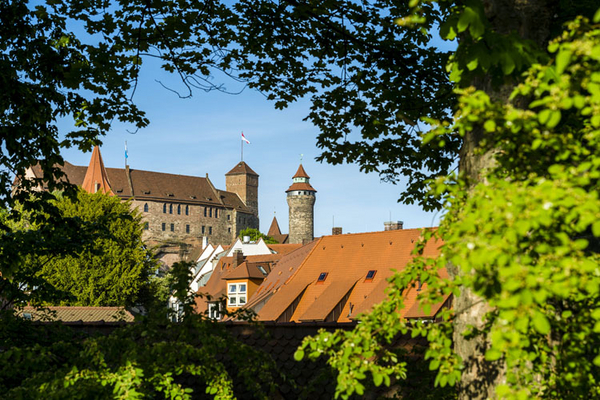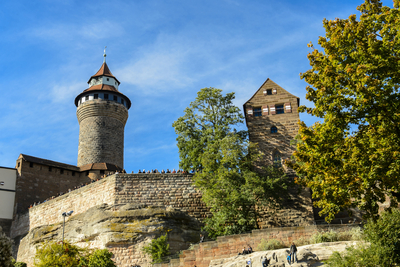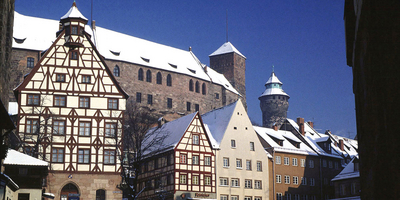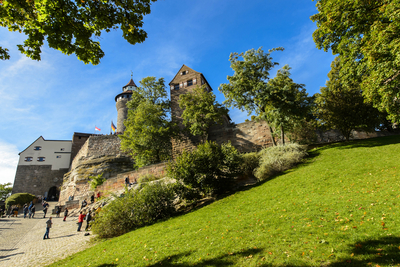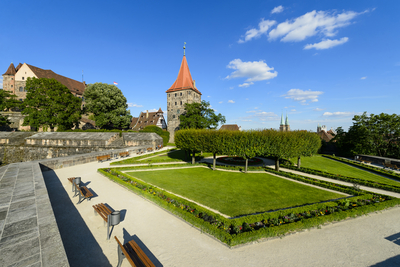The Imperial Castle atop the rocky promontory above Nuremberg was one of the most important fortified imperial palaces of the Old Holy Roman Empire.
The castle and the city served as the location for numerous imperial assemblies. From 1356 on the "Golden Bull" of Emperor Charles IV provided that every newly elected future ruler must hold his first imperial Diet in Nuremberg. Moreover, from 1424 the imperial regalia were safely kept in Nuremberg. Nuremberg was a very popular residence for the rulers in the age of the itinerant kingships and up until the 30 Years' War it was the central location of the empire.
Deep Well and Sinwell Tower
The Deep Well is spectacular. The well house is located in the center of the outer bailey. The shaft of the well was hewn into the rock to a depth of 47 meters. A highlight of the visit is also the round Sinwell Tower ("sinwell" Middle High German = very round), which was built as a keep for the Imperial Castle in the 2nd half of the 13th century; the topmost storey and the interior wooden roof construction were built in the 1560s.
Magnificent View over the City Imperial Castle Museum
From the observation platform of the Sinwell Tower at a height of 385 meters the visitor is offered a panoramic view of the entire city of Nuremberg.
Imperial Castle Museum
In the Kemenate, (a building with residential and work rooms heated by fireplaces or later stoves) the Germanisches Nationalmuseum presents the historical role and the changing tasks of the Nuremberg Imperial Castle. Finds from archaeological digging, ornamental architectural elements, models and reconstruction sketches illustrate the history of this important site.
Key facts:
- one of the most important fortresses in Germany
- first mentioned in 1105
- from 1050 to 1571, all Holy Roman Emperors resided - although temporarily - in the Imperial Castle
- one of the largest and most modern youth hostels in Germany is located in the former Imperial Stables
![[Translate to English:] Nürnberger Burg und Kaiserburgmuseum Imperial Castle Panorama](/fileadmin/_processed_/d/b/csm_kaiserburg05_4e787dcba7.jpg)
